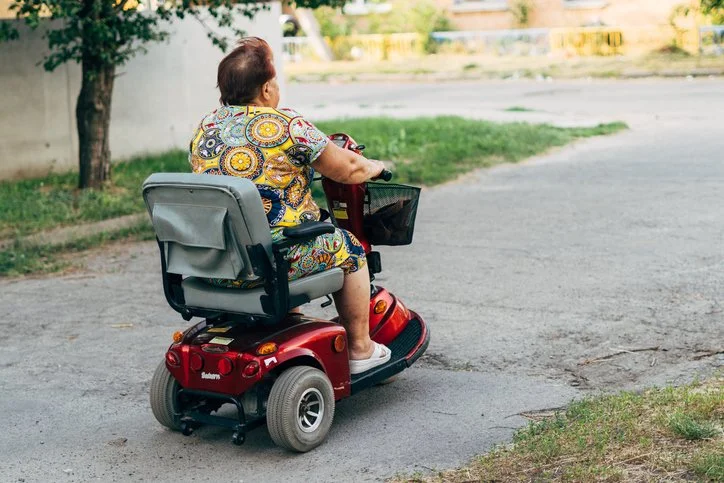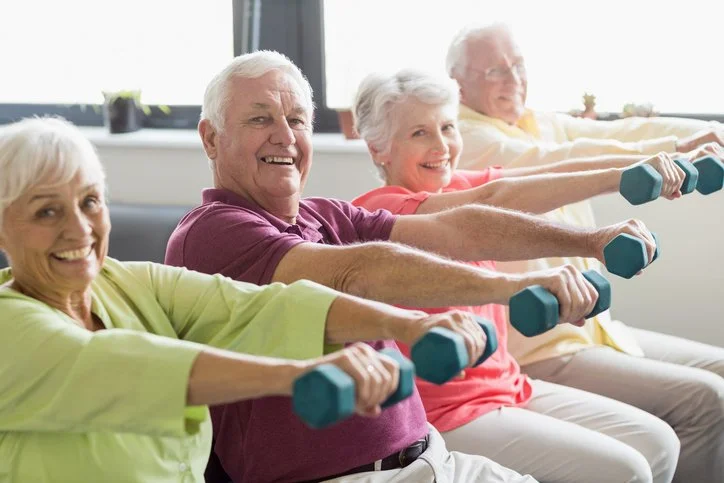The Silent Struggle: Progressive Muscle Loss in Seniors and How to Fight It
Four years ago, I wrote about sarcopenia, where I talked about how death starts in the legs. I want to revisit the subject again today because I just lost two loved ones to it, and I wanted to add a few personal observations about the struggles of watching someone succumb to it. As we age, the gradual loss of muscle strength can transform vibrant, independent seniors into individuals who struggle with basic tasks like eating or dressing. This condition, known as sarcopenia, is a hallmark of aging that often goes unnoticed until it severely impacts quality of life. For families, watching loved ones weaken to the point of near immobility—sometimes resembling the limitations of a person with quadriplegia—is emotionally devastating. Beyond the personal toll, sarcopenia drives significant medical and caregiving costs. Understanding why muscle loss happens, its contributing factors, and how to prevent or reverse it is critical to supporting healthy aging.
Why Muscle Strength Declines with Age
Sarcopenia is the progressive loss of muscle mass and strength, typically beginning in one’s 30s and accelerating after age 60. By age 80, many seniors have lost 30-50% of their muscle mass. Several biological factors drive this decline:
Hormonal Changes: Levels of testosterone and growth hormone, which support muscle maintenance, decrease with age.
Reduced Muscle Protein Synthesis: Aging muscles become less efficient at using dietary protein to repair and build tissue.
Neuromuscular Decline: The connection between nerves and muscles weakens, reducing muscle activation.
Inflammation: Chronic low-grade inflammation, common in older adults, accelerates muscle breakdown.
Mitochondrial Dysfunction: Aging impairs the energy-producing mitochondria in muscle cells, reducing endurance and strength.
These factors create a vicious cycle where muscle loss leads to reduced activity, which further weakens muscles.
Contributing Factors, Including Lifestyle
While aging is inevitable, lifestyle choices significantly influence the severity of sarcopenia:
Sedentary Behavior: A lack of physical activity is the single biggest contributor to muscle loss. Muscles need regular stimulation to maintain strength, and prolonged inactivity accelerates atrophy.
Inadequate Nutrition: Insufficient protein intake is a major culprit. Seniors often eat less overall, and many don’t consume enough high-quality protein to support muscle repair.
Chronic Diseases: Conditions like diabetes, heart disease, or arthritis can limit mobility and contribute to muscle wasting.
Medications: Some drugs, such as corticosteroids, can cause muscle breakdown as a side effect.
Social Isolation: Loneliness or depression may reduce motivation to stay active or eat well, exacerbating muscle decline.
The Importance of Quality Protein
Protein is the building block of muscle, and its role becomes even more critical with age. Seniors need 1.2-2.0 grams of protein per kilogram of body weight daily, significantly more than younger adults. Many “experts” don’t recommend nearly enough protein for healthy young people. Read this post about poor dietary advice from supposed authorities. This can lead to big problems for seniors. For a 150-pound (68 kg) senior, adequate protein translates to 82-136 grams of protein daily.
Not all proteins are equal. Animal-based proteins (e.g., eggs, chicken, fish, beef, dairy) are superior to plant-based proteins for muscle health because they contain higher levels of essential amino acids, particularly leucine, which triggers muscle protein synthesis. Plant-based proteins, while valuable, often lack sufficient leucine and are less bioavailable, meaning the body absorbs them less efficiently. For example, 100 grams of chicken provides about 30 grams of protein with optimal amino acid profiles, while 100 grams of lentils offers only 9 grams of protein with lower leucine content. Sadly, there has been a big push lately for plant-based proteins, exacerbating sarcopenia for many, especially seniors. Seniors relying heavily on plant-based diets may need to consume larger quantities or combine sources (e.g., rice and beans) to meet needs, which can be challenging given their generally reduced appetites.
Exercises to Mitigate Muscle Loss
Physical activity is the most effective way to prevent and reverse sarcopenia. Exercise stimulates muscle growth, improves circulation, and enhances neuromuscular connections. Key exercises include:
Walking: A simple, low-impact activity, walking strengthens leg muscles, improves balance and boosts cardiovascular health. Aim for 30 minutes most days, even in short bouts. For frail seniors, assisted walking or shorter distances can still provide benefits. One of the people I recently lost was an avid walker and had less than three weeks of severe immobility. The other, who never went for walks, was severely immobilized for over six months.
Resistance Training: Lifting light weights, using resistance bands, or doing bodyweight exercises (e.g., chair squats) builds muscle. Two to three sessions per week, targeting major muscle groups, can yield significant improvements.
Balance Exercises: Tai chi or standing on one leg reduces fall risk, a major concern for seniors with weak muscles.
Stretching: Daily stretching maintains flexibility, supports mobility, and reduces injury risk.
For seniors with limited mobility, physical therapy or chair-based exercises can be tailored to their abilities. Consistency is key—muscle gains can occur at any age with regular effort.
Preventing and Improving Muscle Loss
Preventing sarcopenia starts early, but it’s never too late to act. Strategies include:
Prioritize Protein: To maximize muscle repair, spread protein intake across meals (e.g., 25-30 grams per meal). Include animal-based sources like Greek yogurt, salmon, or eggs.
Stay Active: Incorporate walking and resistance exercises into daily routines. Even light activity, like gardening, helps.
Manage Chronic Conditions: Work with healthcare providers to control diseases that contribute to muscle loss.
Supplements: Supplements like whey protein or creatine (under medical supervision) can support muscle health in some cases.
Social Engagement: Group exercise classes or community activities combat isolation and encourage consistent activity.
For seniors already experiencing muscle loss, a combination of nutrition intervention (increased protein) and supervised exercise can lead to measurable strength gains within weeks. Physical therapy may be necessary for severe cases.
The Cost to Families and Healthcare
Sarcopenia’s toll extends beyond the individual. Emotionally, family members grapple with watching loved ones lose independence, often taking on caregiving roles that disrupt work and personal lives. The financial burden is staggering: sarcopenia-related falls and fractures cost the U.S. healthcare system over $19 billion annually, with hospitalization costs for a single hip fracture averaging $40,000. Home modifications, mobility aids, and in-home care add thousands more. For families, out-of-pocket expenses for caregiving or assisted living can range from $5,000 to $10,000 monthly, depending on care needs.
Medicare often covers only a fraction of these costs, leaving families to bear the rest. Preventive measures—like protein-rich diets and exercise—cost far less. A year’s supply of high-quality protein (e.g., whey powder or meat) costs under $500, and community exercise programs are often available for free or low cost.
Hope for the Future
Sarcopenia may be a natural part of aging, but it’s not inevitable. By prioritizing high-quality animal-based protein, engaging in regular exercise like walking, and addressing lifestyle factors, seniors can maintain strength and independence. Families can play a vital role by encouraging healthy habits and seeking early interventions. The emotional and financial costs of muscle loss are immense, but proactive steps can reduce these burdens, allowing seniors to age with vitality and dignity. For those already affected, targeted nutrition and exercise offer a path to recovery, proving that strength can be reclaimed at any age. Remember: working out is more important for seniors than for the young!







